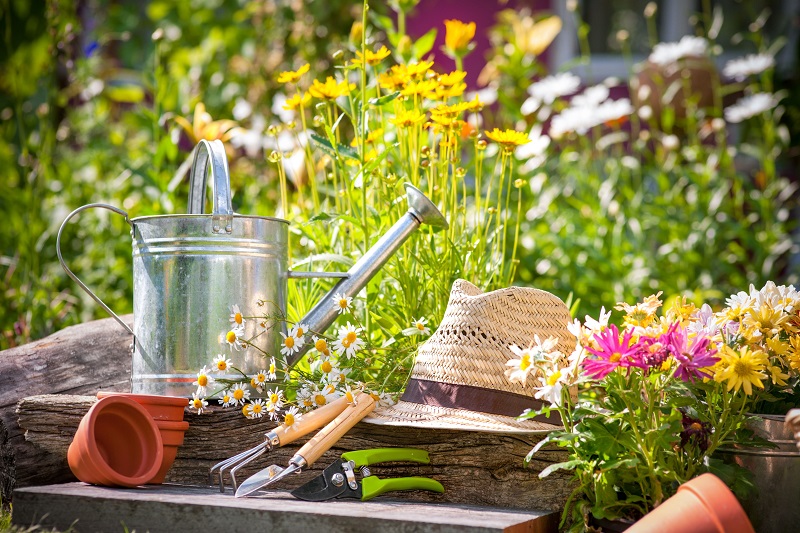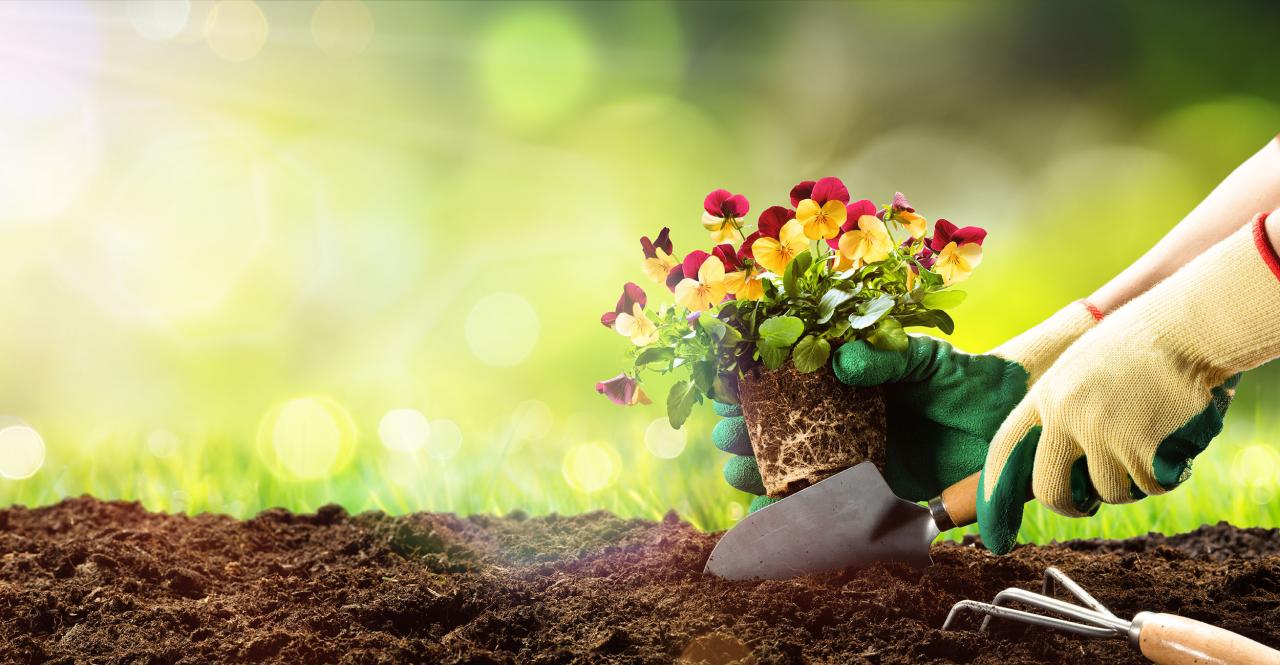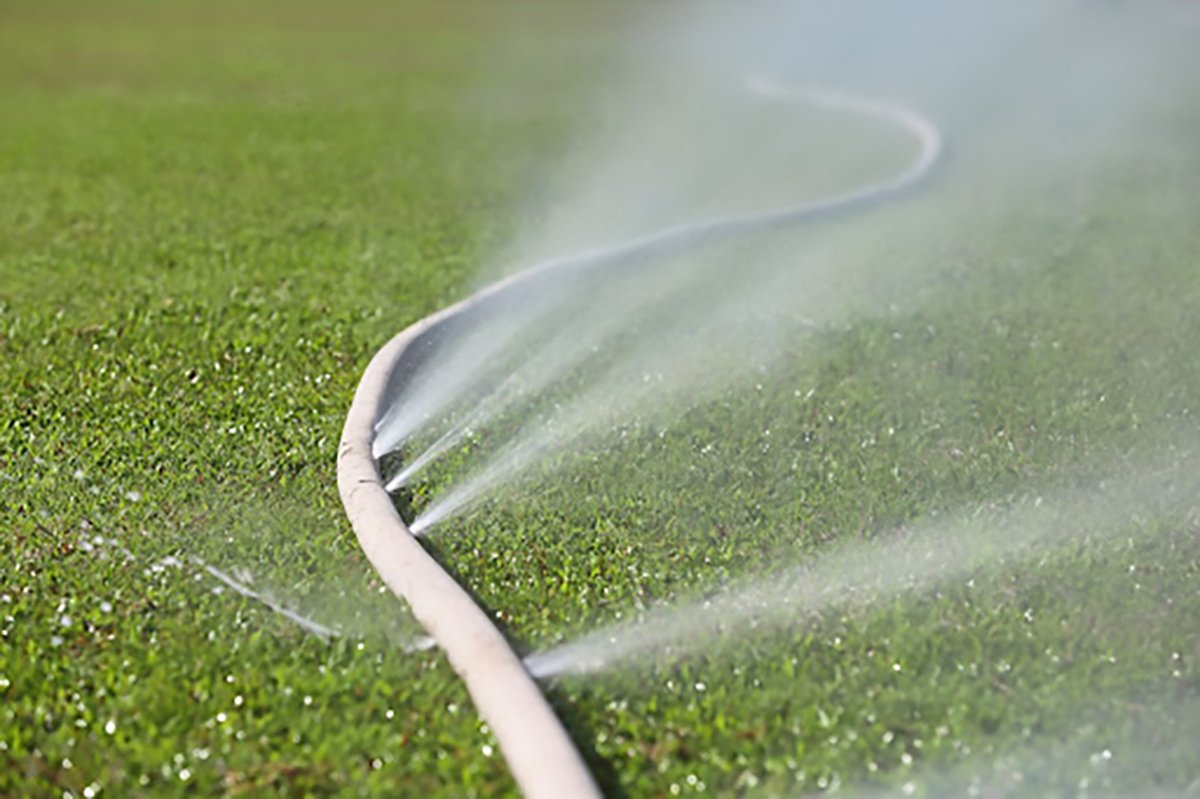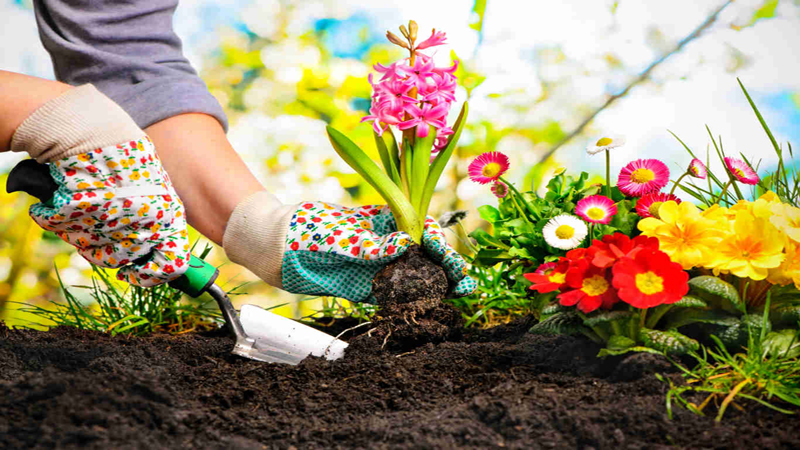Home-garden home-improvement plumbing: Transform your outdoor space from drab to fab! This isn’t just about fixing leaks; it’s about creating a thriving garden oasis with efficient, stylish, and functional plumbing. We’ll cover everything from designing basic systems and choosing the right pipes to tackling DIY projects that boost your home’s value and mastering water conservation techniques. Get ready to unleash your inner DIY pro and make your garden the envy of the neighborhood.
From installing a new outdoor faucet to designing a rainwater harvesting system, we’ll walk you through each step with clear instructions and helpful tips. Learn to troubleshoot common issues, choose the right materials, and even enhance your garden’s aesthetic appeal with well-integrated plumbing. Whether you’re a seasoned DIY enthusiast or a complete beginner, this guide will empower you to take control of your home garden’s plumbing.
Home Garden Plumbing Systems

Creating a well-designed plumbing system for your home garden is crucial for efficient and effective watering. A thoughtfully planned system ensures your plants receive the right amount of water at the right time, minimizing waste and maximizing growth. This section details the essential components and considerations for establishing a reliable home garden irrigation setup.
Basic Home Garden Plumbing System Design
A simple home garden plumbing system typically involves a water source, pipes to transport water, and fixtures for water distribution. The following table Artikels a basic design for a small garden:
| Component | Specifications | Installation Notes |
|---|---|---|
| Water Source | Garden hose connected to a spigot, or a rain barrel with a pump. Consider water pressure and flow rate. | Ensure the water source is readily accessible and has sufficient capacity for your garden’s needs. |
| Pipes | 1/2 inch diameter polyethylene (PE) tubing for main lines; 1/4 inch diameter tubing for drip emitters. Consider length and elevation changes. | Use appropriate fittings to connect pipes securely and prevent leaks. Ensure proper slope for gravity-fed systems. |
| Fixtures | Drip emitters, soaker hoses, or spray nozzles depending on plant type and water requirements. | Space fixtures appropriately to ensure even water distribution. Adjust flow rates as needed. |
| Pressure Regulator (Optional) | A pressure regulator to reduce water pressure to a suitable level for drip irrigation. | Install a pressure regulator to prevent damage to delicate plants from high pressure. |
Types of Pipes for Home Garden Plumbing
Several pipe types are suitable for home garden irrigation, each with advantages and disadvantages:
- Polyethylene (PE) Tubing: Flexible, lightweight, resistant to corrosion, relatively inexpensive, and easy to install. However, it can be susceptible to UV degradation over time if exposed to direct sunlight. Consider using UV-resistant PE tubing for outdoor applications.
- Polyvinyl Chloride (PVC) Pipes: Durable, rigid, resistant to corrosion and chemicals, and relatively inexpensive. However, they are less flexible than PE tubing, making installation more challenging in areas with curves or obstacles. Requires solvent welding for connections.
- Copper Pipes: Extremely durable, long-lasting, and resistant to corrosion. However, they are expensive and more difficult to install than PE or PVC tubing. Requires specialized tools and techniques for joining.
Pressure-Regulated vs. Gravity-Fed Systems
Choosing between a pressure-regulated system and a gravity-fed system depends on several factors:
- Pressure-Regulated System: Offers consistent water pressure throughout the system, even with varying elevations. Allows for use of various fixtures like spray nozzles and drip emitters. Requires a pump and pressure regulator, adding to the initial cost. More complex to install.
- Gravity-Fed System: Simpler and less expensive to install, relying solely on gravity to move water. Requires minimal maintenance. However, water pressure is inconsistent, especially over varying elevations. Best suited for smaller gardens with relatively flat terrain and drip irrigation.
Home Improvement Projects Involving Plumbing: Home-garden Home-improvement Plumbing

Upgrading your home’s plumbing system can significantly enhance its functionality, comfort, and value. From simple repairs to more complex installations, plumbing projects offer a wide range of opportunities for homeowners to improve their living spaces. Whether you’re a seasoned DIY enthusiast or a beginner, tackling plumbing projects can be a rewarding experience, adding both aesthetic and practical improvements to your home.
This guide explores several home improvement plumbing projects, categorized by difficulty level, and provides a step-by-step guide for a common outdoor plumbing installation.
Installing a New Outdoor Faucet
Installing a new outdoor faucet for your garden hose is a relatively straightforward project, perfect for beginner DIYers. This addition enhances convenience and functionality, especially during warmer months. Proper preparation and adherence to safety measures are crucial for a successful installation.
- Turn off the water supply: Locate the main water shut-off valve for your house and turn it off completely. This prevents water from spraying unexpectedly during the installation process.
- Gather necessary tools: You’ll need a wrench (adjustable is ideal), pipe cutters or a hacksaw, Teflon tape, PVC cement (if using PVC pipes), a new outdoor faucet, and a bucket or towels to catch any remaining water.
- Locate the existing water line: Identify the existing water supply line that you’ll connect the new faucet to. This usually runs along the exterior wall near where you want to install the faucet.
- Cut the pipe: Carefully cut the existing pipe, ensuring a clean and straight cut. If using PVC, use a pipe cutter for a precise cut. For metal pipes, a hacksaw may be necessary.
- Prepare the pipe ends: Clean the cut ends of the pipe thoroughly, removing any burrs or debris. This ensures a proper seal when connecting the new faucet.
- Apply Teflon tape: Wrap several layers of Teflon tape around the male threads of the new faucet and the pipe fitting. This creates a watertight seal.
- Connect the faucet: Carefully screw the new faucet onto the prepared pipe. Tighten securely with the wrench, but avoid over-tightening, which can damage the threads.
- Turn the water back on: Slowly turn the main water shut-off valve back on. Check all connections for leaks.
- Test the faucet: Turn the faucet on and check for leaks. If you notice any leaks, tighten the connections or re-apply Teflon tape as needed.
Common Home Improvement Plumbing Projects by Difficulty Level
Various plumbing projects can significantly boost your home’s value. The difficulty level of each project depends on your experience and the complexity of the work.
- Beginner: Replacing a leaky faucet, installing a new showerhead, repairing a running toilet. These projects involve simple repairs and replacements, requiring minimal tools and expertise.
- Intermediate: Installing a new toilet, replacing a section of damaged pipe, unclogging a main drain line. These projects require more advanced skills and tools, but are still manageable for DIYers with some plumbing experience.
- Advanced: Repiping a section of the house, installing a new water heater, adding a bathroom or kitchen. These projects are best left to experienced plumbers due to their complexity and potential for significant damage if done incorrectly.
Simple Rainwater Harvesting System for a Home Garden
Rainwater harvesting is an eco-friendly way to supplement your garden’s water needs. A simple system can be easily implemented to collect and store rainwater for irrigation.
| Component | Description | Connection |
|---|---|---|
| Rain Gutter | Collects rainwater from the roof. | Connected to the downspout. |
| Downspout | Directs rainwater from the gutter. | Connected to the rain barrel. |
| Rain Barrel | Stores collected rainwater. | Connected to the downspout and the garden hose. |
| Overflow Pipe | Prevents overflow from the rain barrel. | Connected to the rain barrel and directs excess water away from the foundation. |
| Garden Hose | Used to irrigate the garden. | Connected to the rain barrel. |
Troubleshooting Common Plumbing Issues in Home Gardens

Maintaining a thriving home garden often involves dealing with various plumbing challenges. From leaky faucets to frozen pipes, these issues can disrupt your gardening routine and even cause significant damage. Understanding the common problems and their solutions is key to keeping your garden’s plumbing system in top shape. This section provides practical advice and troubleshooting steps for resolving common plumbing issues in outdoor settings.
Leaky Faucets
A leaky outdoor faucet is not only wasteful but can also lead to water damage and higher water bills. Identifying and fixing the leak promptly is crucial.
- Inspect the Faucet: Carefully examine the faucet for visible signs of leakage, paying attention to the handle, spout, and connections. Look for loose nuts, worn-out washers, or cracks in the faucet body.
- Tighten Connections: If the leak originates from loose connections, simply tightening the nuts or bolts with a wrench might solve the problem.
- Replace Worn-Out Washers: If the leak persists, the faucet’s internal washers might be worn out. Replacing these washers is usually a straightforward DIY task. You’ll need to turn off the water supply, disassemble the faucet handle, and replace the worn-out washers with new ones of the correct size.
- Consider Replacement: If the faucet is severely damaged or beyond repair, replacing it entirely is the most effective solution. Choose a durable, weather-resistant faucet designed for outdoor use.
Clogged Drains
Clogged drains in outdoor settings, such as those connected to sinks or irrigation systems, can disrupt water flow and lead to backups.
Revamping your home? Home-garden home-improvement plumbing projects often involve unexpected challenges. Expanding your living space by transforming a flat roof into a usable area requires careful planning, as detailed in this article on transforming a flat roof into a usable rooftop space with structural considerations. Remember, proper waterproofing and drainage are crucial aspects of any home improvement, especially when adding rooftop features, to avoid future plumbing headaches.
- Identify the Clog: First, determine the location and extent of the clog. Is it a minor blockage near the drain opening, or is it a more significant problem further down the line?
- Use a Plunger: For minor clogs, a simple plunger can often do the trick. Ensure a good seal around the drain opening and plunge vigorously.
- Try a Drain Snake: If a plunger isn’t effective, a drain snake (also known as a plumber’s snake) can help remove stubborn clogs. Carefully feed the snake into the drain, rotating it to break up and remove the blockage.
- Chemical Drain Cleaners (Use with Caution): Chemical drain cleaners can be effective, but they should be used cautiously and according to the manufacturer’s instructions. These chemicals can damage pipes if used excessively or improperly.
- Professional Help: If home remedies fail to clear the clog, it’s best to call a professional plumber. They have specialized tools and expertise to handle complex drain blockages.
Frozen Pipes
Frozen pipes are a common problem in colder climates, particularly for outdoor plumbing. Frozen water expands, potentially causing pipes to burst and leading to significant water damage.Preventing frozen pipes is crucial. Here are some steps to winterize your outdoor plumbing:
- Disconnect Hoses: Disconnect all garden hoses and store them indoors to prevent water from freezing inside the pipes.
- Drain Outdoor Faucets: Turn off the water supply to outdoor faucets and open the faucets to drain any remaining water. Consider installing frost-proof sillcocks, which have a valve located inside the house, allowing you to shut off the water to the outdoor faucet without having to reach the exterior valve.
- Insulate Exposed Pipes: Wrap exposed pipes with insulation materials like foam pipe sleeves or heat tape to help maintain a warmer temperature and prevent freezing. Pay particular attention to pipes located in unheated areas or those that are vulnerable to cold winds.
- Keep Garden Sheds and Outdoor Structures Heated: If you have plumbing running through unheated outdoor structures, such as a garden shed, consider using a small space heater to keep the temperature above freezing. Even a small amount of heat can make a big difference.
- Monitor Temperatures: Keep an eye on the weather forecast and take preventative measures before freezing temperatures arrive. Early action can prevent costly repairs.
Low Water Pressure in Irrigation Systems
Low water pressure in a home garden irrigation system can significantly affect plant health and growth.
- Check the Water Source: Ensure that the main water supply to the irrigation system has adequate pressure. Low water pressure from the municipal supply can affect the entire system.
- Inspect the Pipes: Look for leaks, kinks, or blockages in the pipes. A small leak can significantly reduce pressure, and blockages can completely stop water flow.
- Clean the Sprinkler Heads: Clogged sprinkler heads can restrict water flow and reduce pressure. Clean the sprinkler heads regularly to remove debris and ensure proper operation.
- Check the Valves: Make sure all valves in the irrigation system are fully open. Partially closed valves can significantly reduce water pressure.
- Consider a Pressure Booster Pump: If the problem persists, installing a pressure booster pump can increase water pressure throughout the irrigation system. This is particularly useful for systems that rely on long runs of pipe or have many sprinkler heads.
Plumbing Materials and Fixtures for Home Gardens

Creating a thriving home garden often requires a well-planned and efficient irrigation system. Choosing the right plumbing materials and fixtures is crucial for both functionality and longevity. This section will explore various options available, helping you make informed decisions for your specific gardening needs.
Garden Hose Comparison
Selecting the appropriate garden hose depends on factors like hose length, water pressure, and the frequency of use. Different materials offer varying levels of durability and water flow. The table below compares common garden hose types:
| Hose Material | Durability | Water Flow Rate | Advantages | Disadvantages |
|---|---|---|---|---|
| Rubber | High (with proper care) | Good | Flexible, durable, kink-resistant (some types) | Can be heavy, prone to cracking with age and exposure to extreme temperatures. |
| Vinyl | Moderate | Good | Lightweight, affordable | Less durable than rubber, prone to kinking and damage from sunlight and cold temperatures. |
| Reinforced Rubber | High | Excellent | Highly durable, kink-resistant, long lifespan | More expensive than vinyl or standard rubber hoses. |
| PVC (Polyvinyl Chloride) | Moderate to High | Good to Excellent (depending on thickness) | Lightweight, relatively inexpensive, resists kinking | Can become brittle over time, susceptible to damage from extreme temperatures. |
Outdoor Faucet Types and Applications
Outdoor faucets, or spigots, are essential for watering plants and other garden tasks. Different types offer varying features and suitability for specific needs.
Revamping your home garden? Home-improvement plumbing projects often overlook the bigger picture. Consider improving air quality by incorporating green elements, like learning how to design a rooftop garden, as detailed in this helpful guide: incorporating green elements into a rooftop landscape design for improved air quality. This sustainable approach not only beautifies your space but also contributes to a healthier environment, complementing your home-garden home-improvement plumbing efforts.
Frost-Proof Faucets: These faucets are designed to prevent freezing damage in cold climates. The valve is located inside the house wall, protecting it from freezing temperatures. They are ideal for areas with harsh winters.
Hose Bibbs: These are the standard outdoor faucets with a threaded connection for attaching a garden hose. They are widely available and affordable, suitable for most gardening needs.
Wall-Mounted Faucets: These faucets are directly mounted to an exterior wall. They offer a sleek, modern look and are available in various styles and finishes. They are suitable for locations where a stand-alone faucet is not desired.
Faucet with built-in timer: This type of faucet allows you to set the water flow duration. This is convenient for automatic watering.
Essential Plumbing Tools for Home Garden Maintenance
Having the right tools readily available simplifies garden plumbing maintenance and repairs.
A well-equipped toolbox should include:
- Adjustable wrench
- Pipe wrench
- Basin wrench
- Pliers (needle-nose and slip-joint)
- Screwdrivers (Phillips and flathead)
- Plumber’s tape (Teflon tape)
- Hacksaw or pipe cutter
- Bucket
- Flashlight
Water Conservation in Home Garden Plumbing

Conserving water in your home garden is not just environmentally responsible; it also saves you money on your water bill. Implementing water-saving techniques in your irrigation system and choosing efficient plumbing fixtures can significantly reduce water waste without compromising the health of your plants. This section explores practical strategies for achieving significant water savings in your home garden’s plumbing.Implementing Water-Saving Irrigation TechniquesEffective water conservation starts with the irrigation system.
Traditional methods often lead to significant water loss through evaporation and runoff. Switching to more efficient methods drastically improves water usage.
Drip Irrigation Systems, Home-garden home-improvement plumbing
Drip irrigation delivers water directly to the roots of plants, minimizing evaporation and runoff. A network of tubes and emitters slowly releases water, ensuring consistent moisture without wasting water on surrounding areas. This method is particularly effective for vegetables, flowers, and shrubs, allowing for precise water delivery based on individual plant needs. For example, a drip irrigation system in a 100-square-foot vegetable patch might use only half the water of a traditional sprinkler system while achieving better results.
This system is ideal for areas with limited water resources or high evaporation rates.
Rainwater Harvesting with Rain Barrels
Collecting rainwater through rain barrels provides a sustainable and free water source for your garden. Rain barrels capture rainwater from rooftops, diverting it from storm drains and providing a readily available supply for irrigation. A single rain barrel can collect dozens of gallons of water during a storm, reducing reliance on municipal water sources. For instance, a 55-gallon rain barrel can significantly supplement watering needs for smaller gardens, reducing the strain on your water supply during dry spells.
Installing several barrels can further enhance the water conservation efforts.
Low-Flow Plumbing Fixtures for Outdoor Use
Low-flow plumbing fixtures, designed to reduce water consumption without sacrificing performance, are increasingly available for outdoor use.
Low-Flow Outdoor Faucets and Hose Nozzles
These fixtures incorporate flow restrictors to reduce the amount of water used while maintaining sufficient water pressure for effective watering. A low-flow faucet might use only 1.5 gallons per minute compared to a standard faucet’s 2.5 gallons per minute, representing a significant reduction in water usage over time. Similarly, low-flow hose nozzles offer adjustable spray patterns, allowing for precise control of water distribution, minimizing waste.
Choosing these fixtures can contribute significantly to overall water conservation in your garden.
Leak Detection and Repair
Regularly checking for leaks in your home garden plumbing system is crucial for conserving water and preventing potential damage.
Visual Inspection and Pressure Testing
Regular visual inspections of hoses, pipes, and connections can identify visible leaks. For less obvious leaks, a simple pressure test can help pinpoint the location of a leak within the system. A noticeable drop in water pressure over time, even without visible leaks, suggests a potential problem requiring investigation. Promptly addressing leaks prevents significant water loss and potential damage to your garden.
Aesthetic Considerations for Home Garden Plumbing

Integrating plumbing fixtures seamlessly into your home garden’s design is crucial for creating a visually appealing and functional outdoor space. Careful consideration of fixture style, placement, and the concealment of less attractive elements can elevate your garden from merely functional to truly stunning. This involves choosing materials and finishes that complement your garden’s theme and overall aesthetic, while also ensuring the practical needs of your outdoor plumbing are met.
Integrating Plumbing Fixtures into Landscaping Design
Strategic placement of plumbing fixtures can significantly enhance a garden’s aesthetic appeal. For example, a rustic-style outdoor faucet made of aged copper could be beautifully integrated near a stone water feature, creating a cohesive and visually pleasing focal point. Imagine a charming scene: a weathered stone basin, nestled amongst lush ferns and hostas, fed by a gently trickling spout from a gracefully curved, antique-brass faucet.
Alternatively, a sleek, modern faucet with a brushed stainless steel finish could be incorporated into a minimalist, contemporary garden design, perhaps near a raised planter box with clean lines and geometric shapes. The contrast of the smooth, polished metal against the natural textures of the plants would be striking. Careful consideration of the surrounding plants and hardscaping is key to ensure a harmonious blend.
Styles and Finishes for Outdoor Faucets and Fixtures
The style and finish of your outdoor plumbing fixtures significantly impact the overall aesthetic of your garden. A wide array of options exists to complement various garden themes. For a traditional garden, consider ornate faucets with antique brass or oil-rubbed bronze finishes. These fixtures often feature intricate detailing and a classic look that complements period-appropriate landscaping. For a more modern garden, sleek stainless steel or chrome faucets with minimalist designs would be a suitable choice.
Consider also powder-coated finishes in colors that match or complement other garden elements, such as fences or furniture. For a rustic or farmhouse-style garden, wrought iron or galvanized steel fixtures with a weathered patina would be perfect. The versatility of materials and finishes allows for a tailored approach to suit individual preferences and garden styles.
Concealing Exposed Pipes and Plumbing Elements
Exposed pipes and other plumbing elements can detract from the overall aesthetic of a well-designed garden. Fortunately, several methods exist to effectively conceal these less-attractive components. One approach involves using climbing plants or vines to strategically cover pipes and other unsightly elements. Imagine ivy gracefully cascading over a length of pipe, transforming a functional necessity into a verdant, natural feature.
Another method involves building trellises or other structures around exposed pipes, creating a visually appealing screen that hides the plumbing while adding an architectural element to the garden. For underground pipes, consider using decorative covers or stones to camouflage them. The use of natural materials, such as wood or stone, can further enhance the integration of the concealed plumbing into the overall garden design.
Creative camouflage techniques can ensure a clean and polished look.